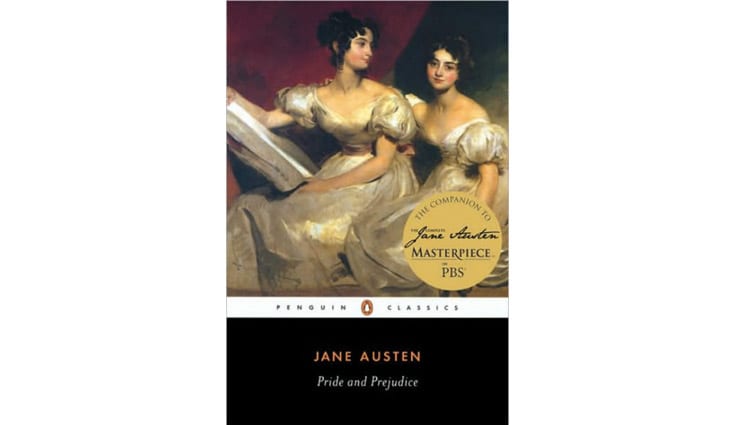01/31/2013 by Molly Donovan |
Teachers Who Rock
5 Lessons Teachers Can Learn from Pride and Prejudice

This past Monday marked the 200th anniversary of Pride and Prejudice, the classic novel of manners by the queen of Victorian Literature, Jane Austen.
If you’re an English teacher—and even if you’re not—you’ve probably read the novel more times than you care to admit. You might teach it—and, along with it, the novel’s feminist undertones, the distinction between love and pragmatism, and what, exactly an “entail” is—to your students, particularly if you’re an instructor of British or AP literature.
But the novel also includes some tips that you can apply more broadly to your profession. Here are six lessons teachers can learn from Pride and Prejudice.
1. It’s okay not to be good at everything.
Elizabeth Bennet, the novel’s heroine, is interesting not because she’s good at everything, but precisely because she isn’t. She and her eventual husband, the enigmatic Mr. Darcy, have a conversation early in the novel about what defines an “accomplished” woman. Darcy indicates that such a lady would be able to play music, sing, dance, draw, speak several languages, and read frequently. Rather than pretend she possesses these qualities—or feel ashamed that she doesn’t—Elizabeth accepts who she is.
Elizabeth replaces exhausting exceptionalism with passion. There are certain things that she is passionate about—reading, her family, travel—that make her unique and, in fact, endear her to Mr. Darcy.
As you teach, remember that it’s okay not to be good at everything—teaching is a learning process. Apply that same logic to your students, and attempt to find the passions and qualities that make each of them unique.
2. Don’t make snap judgments.
This is the obvious lesson of the novel—don’t judge the proverbial book by its cover. This lesson is as important as ever, particularly for teachers. Don’t let first impressions dictate your approach to a subject or to a student. Don’t shy away from something because you fear it—try to view it from a different perspective.
Allow your students to surprise you. Particularly in an independent or boarding school, you’ll spend a great deal of time getting to know your students in multiple capacities. Keep an open mind—you might find that your students are constantly contradicting the image they first presented to you.
3. The importance of planning.
In this easily-readable novel, Ms. Austen underscores the importance of planning. Pride and Prejudice as perfectly-structured a novel as ever was written: from the initial tension in Elizabeth and Darcy’s meeting to the disastrous anticlimax of the first proposal, the upward trajectory of Elizabeth’s feelings for the man she’d judged poorly, Darcy’s climactic saving of the Bennet family’s reputation, and his subsequent successful proposal of marriage to Elizabeth, the novel moves quickly and deliberately in precisely-plotted chapters. Austen wastes no time with frivolous details: everything ties together; each scene has a purpose.
Take a page from Austen’s book as you plan your lessons. Careful preparation can lead to centuries of success!
4. A little humor goes a long way.
Despite the conviction of certain seventeen-year-old boys, Pride and Prejudice is not just Victorian chick lit. It’s a romantic tale with a marriage plot, to be sure, but it’s also a comedy. From the sycophantic Mr. Collins to the drily sarcastic Mr. Bennet, the novel is filled with jokes, little nods from Austen to the reader. The book is really funny.
When faced with a potentially gloomy future, Mrs. Bennet breaks down. Elizabeth, however, learns to laugh. It is her humor, in large part, which melts the icy exterior of the shy Mr. Darcy and leads to their mutual happiness. Keep her success in mind–and bring this sense of humor to the classroom. When facing issues, take a minute to step back. If you can learn to laugh at a problem, you might remedy it more effectively.
5. If at first you don’t succeed…try again.
There’s no shame in failure. Mr. Darcy failed miserably in his first attempt at proposing to the object of his affection, but he tried again. And look at him now: a timeless hunky archetype with 200 years of admirers to his name.
Austen, too, met with failure. She first drafted the novel in 1796—seventeen years before it was finally published. Her refusal to be disheartened led to the publication of a novel that proved truly timeless.
You’ll have failures in the classroom, and so will your students. But don’t let these failures discourage you. Look to your Victorian counterparts—if at first you don’t succeed, try again.
Sayid 6/23/2022 at 9:54am
Thanks for how you explained the lessons to me!
Prema 10/10/2022 at 7:41am
It’s been really useful to me… thank you so much.